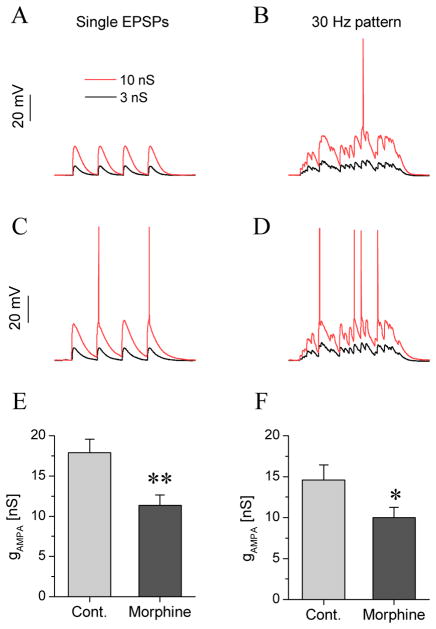Fig. 3.
Type III neurons from dependent animals fire more intensely under the action of simulated synaptic inputs with the dynamic clamp. Voltage responses of a type III neuron from a control rat (a, b) and dependent rat (c, d) are shown for two different stimulus protocols. The first protocol consisted of four EPSPs delivered at 0.25 s intervals. The black and red traces show the responses at 3 and 10 nS AMPA conductance levels, respectively. The neuron remained below spike threshold in the first example (a). The same neuron reached spike threshold when the second stimulus was delivered (b; a mixture of EPSPs and IPSPs at 30 Hz mean frequency was used here). The corresponding panels in c and d demonstrate the firing responses of the BNST neuron from the dependent rat. Here, the type III neuron exhibits more intense firing under identical stimulus strength. The graphs e and f show the mean minimal AMPA synaptic conductance levels required to elicit firing for each protocol (threshold conductances; n=5 vs. 9 for controls vs. dependent)

